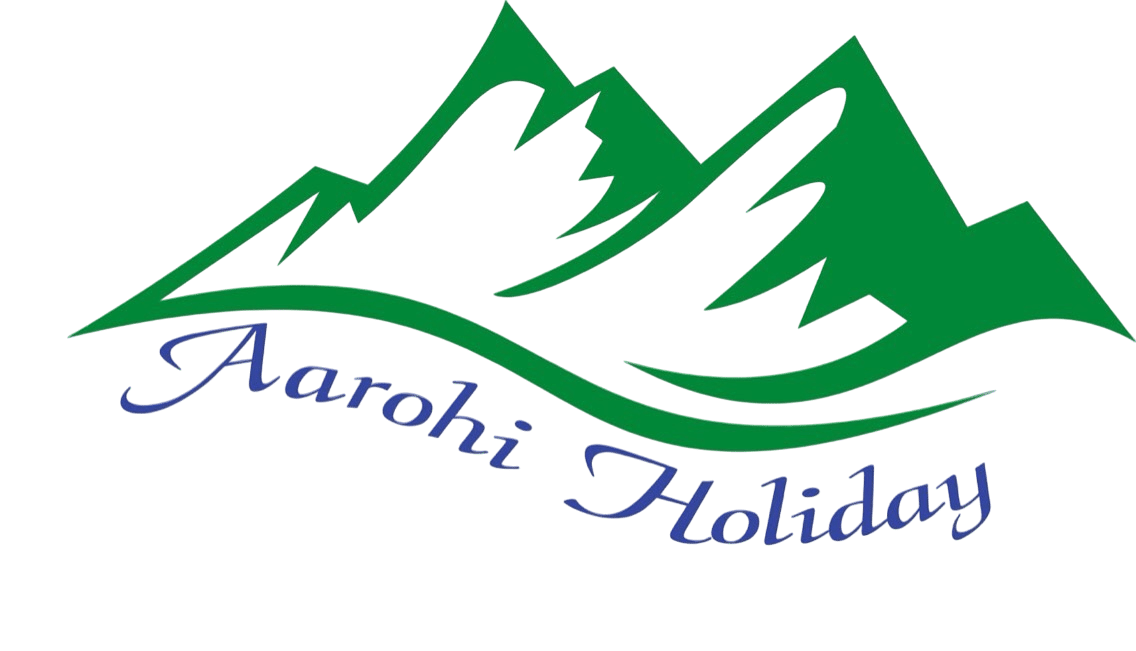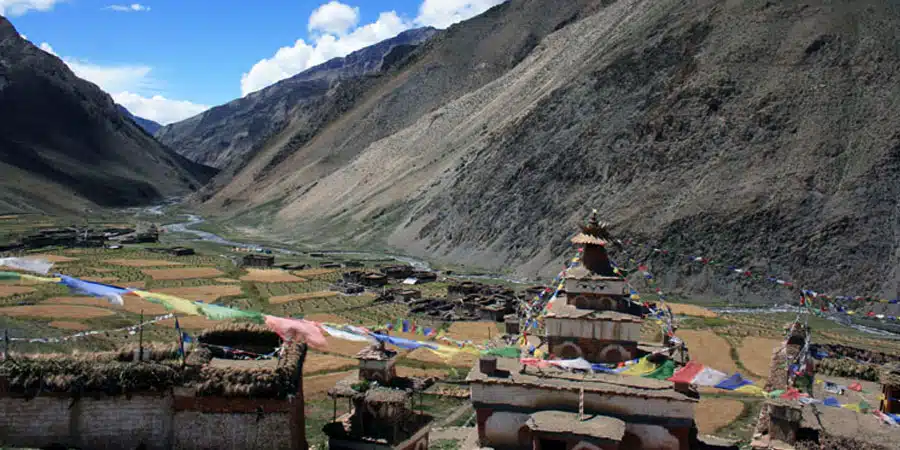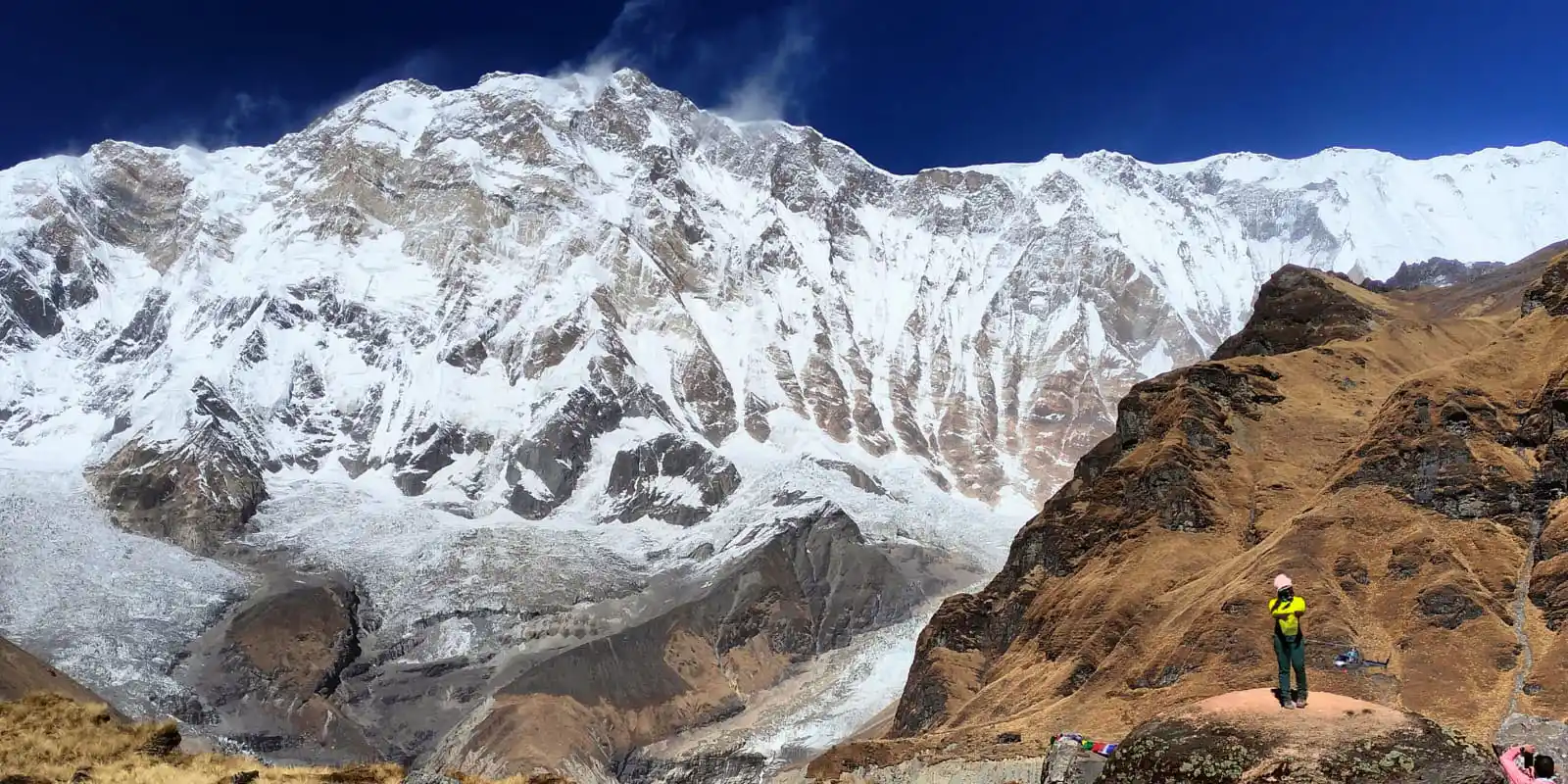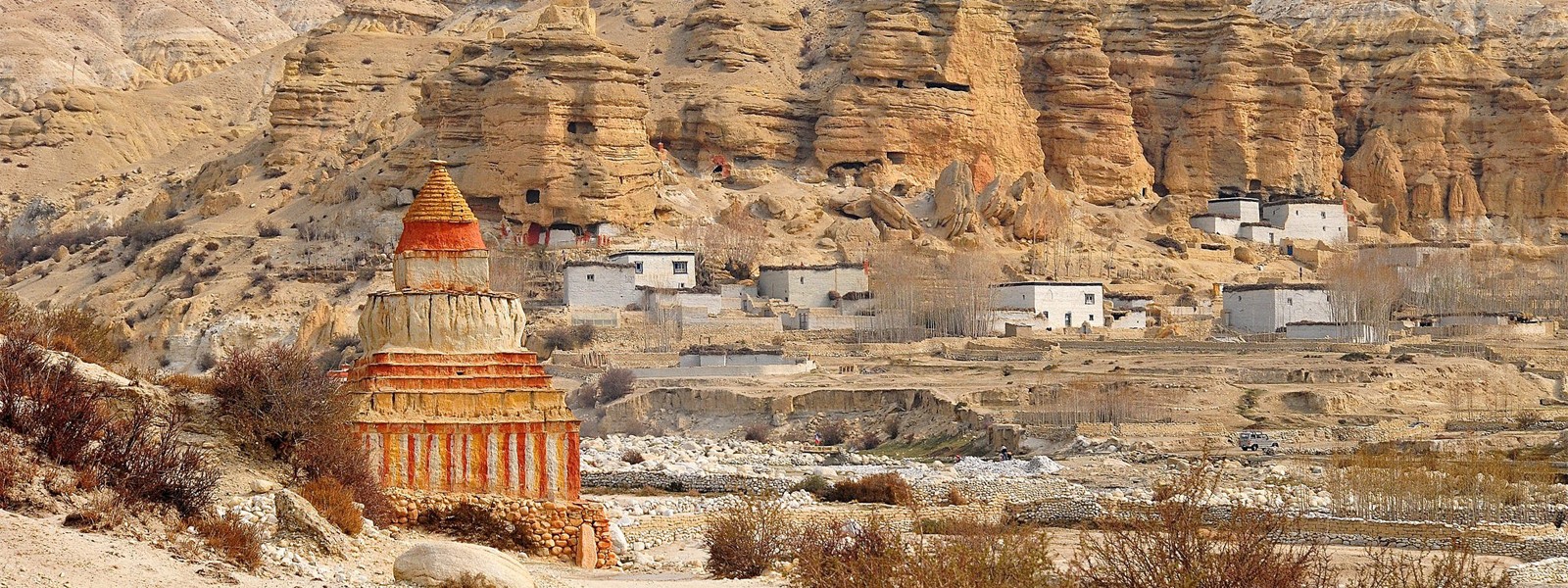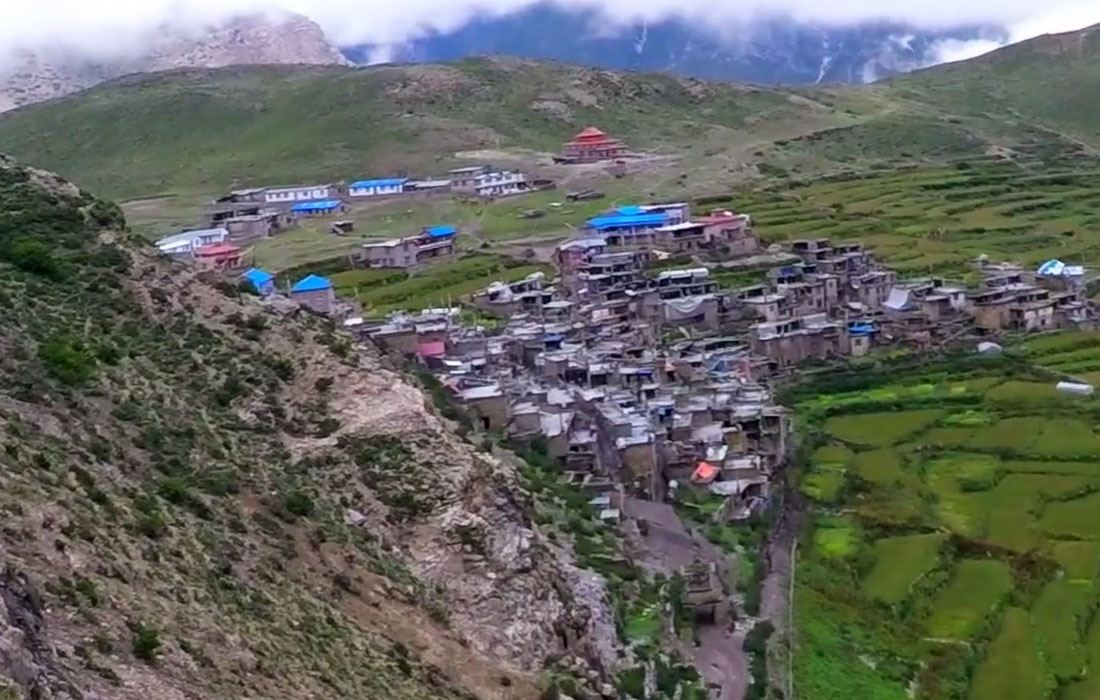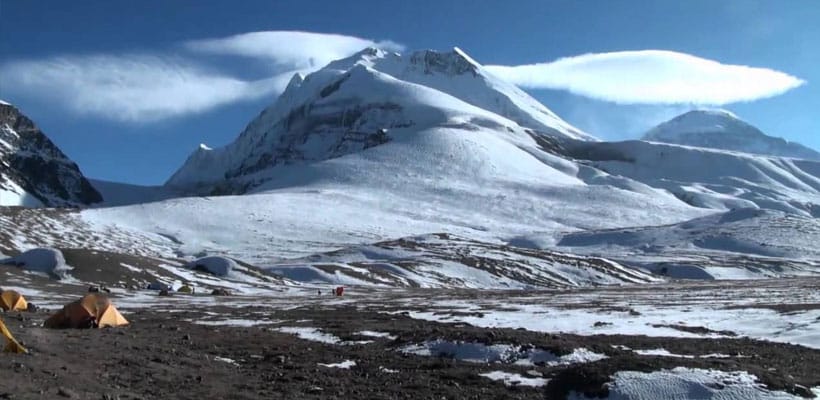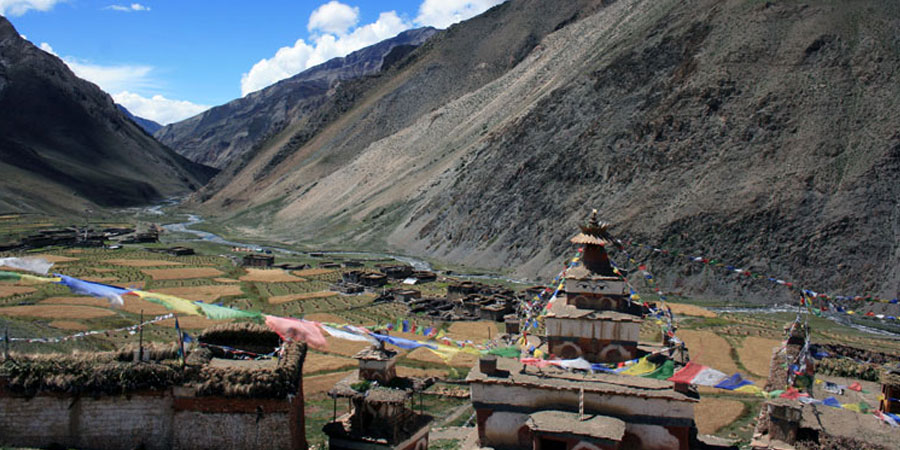Accommodation during Lower Dolpo Trekking
- In Kathmandu and Nepalgunj we provide comfortable accommodation in 3-star hotels with breakfast on a twin-sharing basis.(Private room accommodation can be organized at an extra cost)
- During the trek, we provide comfortable teahouse or tent accommodation on a twin-sharing basis. Hot showers, Wi-Fi, and device charging are available for an additional cost.
Meals and Drinking water on Lower Dolpo Trekking
During the trek, you’ll be provided with three fresh and nourishing meals daily—breakfast, lunch, and dinner—served at local teahouses or prepared by the trekking crew in remote camping areas. The meals typically include traditional Nepali dishes like dal bhat (rice, lentils, and vegetables) along with Tibetan-inspired items such as momos, thukpa (noodle soup), and chapati. In camping sections, our crew prepares a variety of simple but wholesome dishes to keep you energized for the journey through Dolpo’s rugged terrain.
Staying hydrated is essential in the high-altitude and dry climate of Dolpo. Bottled water may be available in some villages, but in remote areas, we rely on natural water sources. Your guide will ensure all drinking water is treated with purification tablets or drops, so you can drink safely while minimizing plastic waste.
Required Permits for the Lower Dolpo Trekking
To explore the remote beauty of Lower Dolpo, you’ll need a Restricted Area Permit, a Shey Phoksundo National Park Permit. Don’t worry about the formalities—we take care of all the paperwork and include the permit fees in your package. All you have to do is pack your bags, lace up your boots, and get ready for the adventure of a lifetime.
- The special trekking permit costs USD 20 per person for the first week, with an additional USD 5 per person for each extra day.
- The Shey Phoksundo National Park entrance fee is USD 30 per person (no time limit)
Best Time for Lower Dolpo Trekking
The best seasons for the Lower Dolpo Trek are spring (April to May) and autumn (September to October). During these months, the weather is generally stable, the skies are clear, and the trails offer magnificent views of Dolpo’s rugged landscapes and Shey Phoksundo Lake. Spring brings colorful wildflowers and lush valleys, while autumn rewards trekkers with crisp air and excellent visibility.
Winter (November to March) is very cold, especially at higher elevations, and many passes may be blocked by snow, making it less suitable for most trekkers. The monsoon season (June to August) is unique in Dolpo as it lies in a rain-shadow area, meaning the region receives far less rainfall than other parts of Nepal—making summer treks possible, though some trails may still be challenging. Whatever the season, we’ll make sure your trek is safe, comfortable, and unforgettable.
Lower Dolpo Trekking Difficulties
The Lower Dolpo Trek is a remote and adventurous journey that involves daily walks of 5 to 7 hours through steep ascents, rocky trails, and high mountain passes. The route takes you from lower villages around 2,000 m to challenging passes such as Numa La (5,318 m) and Baga La (5,190 m)—where the high altitude can bring a risk of altitude sickness if proper acclimatization is not followed. Our itinerary is designed with acclimatization days in key locations to help your body adjust safely.
Lower Dolpo is one of Nepal’s most isolated trekking regions, with limited teahouses in some areas and camping required in the more remote sections. This means trekkers should be prepared for basic facilities, changing weather conditions, and long stretches without access to modern amenities. However, with good physical preparation, the right gear, and the support of our experienced local team, you can take on this trek confidently and enjoy the untouched beauty of Dolpo’s landscapes.
Altitude Sickness and Prevention on Lower Dolpo Trekking
At Aarohi Holiday, your safety is our highest priority—especially on high-altitude adventures like the Lower Dolpo Trek. Our experienced guides are well-trained in altitude sickness prevention, first aid, and emergency response. They monitor every trekker for signs of Acute Mountain Sickness (AMS) and ensure a gradual ascent, with acclimatization days built into the itinerary to help your body adjust naturally.
Common AMS symptoms—such as headaches, nausea, dizziness, or unusual fatigue—are always taken seriously. If any symptoms appear, our team will act immediately, whether that means resting, increasing hydration, descending to a lower altitude, or arranging emergency evacuation if needed. Before the trek begins, you’ll receive a comprehensive safety briefing, and throughout the journey, your guide will stay in close communication to monitor your condition. With the right precautions and the expertise of our local team, you can enjoy the breathtaking beauty of Dolpo with confidence and peace of mind.
Travel Insurance for Lower Dolpo Trekking
Aarohi Holiday strongly recommends that every trekker secure comprehensive travel and medical insurance before starting the Lower Dolpo Trek. This journey takes you through remote, high-altitude regions with limited medical facilities and challenging access for emergency assistance. Your insurance should specifically cover trekking at altitudes up to at least 5,500 meters, including personal injury, accidents, medical treatment, and emergency evacuation—especially helicopter rescue if necessary.
We also suggest choosing a policy that includes coverage for trip cancellations, delays, lost or damaged luggage, and other unexpected events. The right insurance gives you peace of mind, knowing you’re protected no matter what happens along the trail. With this safety net in place, you can focus entirely on the raw beauty and unique culture of Dolpo, while Aarohi Holiday handles the rest of your trekking arrangements.
Lower Dolpo Trekking Itinerary
The Lower Dolpo Trek is an extraordinary adventure into one of Nepal’s most remote and mystical regions, famed for its rugged landscapes, ancient Buddhist culture, and the stunning turquoise waters of Phoksundo Lake. Your journey begins in Kathmandu with a cultural sightseeing tour of the valley’s UNESCO World Heritage Sites before flying to Nepalgunj, the gateway to western Nepal. From there, a short scenic flight takes you to Jhupal in Dolpo, where the trek begins with a walk to Dunai, the district headquarters.
The trail leads you through picturesque villages such as Tarakot, Laini, and Nawarpani, before reaching the beautiful valley of Do Tarap, where you’ll spend an acclimatization day. You’ll then cross two challenging high passes—Numa La Pass (5,190m) and Baga La Pass (5,070m)—rewarding you with breathtaking Himalayan panoramas. Descending from the passes, you’ll trek to Ringmo and hike to the mesmerizing Phoksundo Lake, a highlight of the journey.
From Ringmo, the route continues through Shyanta back to Jhupal, where you’ll fly to Nepalgunj and onward to Kathmandu. This 18-day itinerary offers a blend of adventure, cultural immersion, and raw natural beauty, making it a once-in-a-lifetime trekking experience for those seeking an off-the-beaten-path Himalayan journey.
Lower Dolpo Trekking Cost
The cost of the Lower Dolpo Trek varies based on the season, group size, and level of services you prefer. Our 18-day trek is priced at USD 3,190 per person, covering all essential services from your arrival in Kathmandu to your final departure. This all-inclusive package ensures a seamless, safe, and unforgettable experience in one of Nepal’s most remote and culturally rich trekking regions.
This price is based on a minimum of Two person. For group bookings, we offer special discounts ranging from 5% to 10%, and the group leader can join the trek free of charge. With Aarohi Holiday’s transparent pricing and no hidden fees, you get exceptional value for a unique and rewarding Himalayan adventure through the stunning Lower Dolpo region.
Important Notes for Lower Dolpo Trekking
- This itinerary includes round-trip flights between Kathmandu, Nepalgunj, and Juphal.
- Porters can carry up to 20kg each, but since we provide one porter for every two trekkers, we recommend packing no more than 10kg per person. You’ll be provided with a durable duffle bag to carry your gear comfortably throughout the trek.
- There are no ATMs on the Lower Dolpo Trekking, so carry enough cash from the city before starting your trek.
- Meals are included throughout the trek. However, extra charges apply for hot showers and charging electronic devices at teahouses and lodges.
- Meals and entry fees for sightseeing in Kathmandu are not included in the trek package.
- Drones require hard-to-get permits, so it’s best not to bring.
Fitness Preparation for the Trek
The Lower Dolpo Trek is a challenging high-altitude journey that demands good physical fitness and endurance. To fully enjoy the experience and reduce the risk of fatigue or injury, we recommend preparing your body with regular cardio exercises such as hiking, jogging, cycling, or swimming for at least 6 to 8 weeks before your trek.
Strength training targeting your legs, core, and back is also important, as the trail includes steep climbs, descents, and carrying a daypack. Practicing long walks with a loaded backpack will help condition you for the demands of the trek. Being physically fit not only boosts your stamina but also supports better acclimatization to the high altitudes you’ll encounter in Dolpo’s remote mountains.
A Typical Day on the Trail
A typical day on the Lower Dolpo Trek involves 5 to 7 hours of trekking through stunning and varied landscapes, including high-altitude valleys, rocky mountain passes, ancient villages, and lush forests. Your day begins with a nourishing breakfast before setting out on trails that often climb steadily to higher elevations.
Along the route, you’ll pass through isolated settlements where you’ll have the chance to meet friendly locals and experience their unique Tibetan-influenced culture and traditions. The walking pace is moderate, with time allotted for rest stops, photography, and soaking in the breathtaking scenery. Evenings are spent in simple teahouses or campsites, where you can unwind, enjoy hearty meals, and recharge for the next day’s adventure.
Arrival Instruction
Upon your arrival at Tribhuvan International Airport, our company representatives are stationed to welcome you to the country. We request you to carefully look for your name being held by our representatives following the events upon landing. The representatives are responsible to escort you to your hotel in Kathmandu. You will see men offering you to carry luggage and take you to your destination as you exit the airport. We request you pay no attention to these people and follow the designated representatives and follow their instructions. You will also need to keep an eye on your luggage and belongings to avoid any complications.
Nepal Visa Entry Procedure
For entry into Nepal, there are visa requirements everyone (except Indian nationals) must complete before being allowed to pass through immigration. This is for air travel as well as overland transportation. Most visitors may obtain a visa to enter Nepal, however, there are exceptions.
- 15-day single entry: US $30
- 30-day single entry: US $50
- 90-day multiple entries:US $125
Please have a passport valid for at least 6 months from the time of entry, and have cash ready, preferably in US dollars, though there are other currencies Nepal Immigration accepts. If you are entering via overland, you must have US cash and 3 passport photos. For arrival by air, the kiosks at the airport take your picture for you. For the most up to date list of exceptions for visa on arrival or to obtain the most current visa information, visit the Nepal Department of Immigration website.
